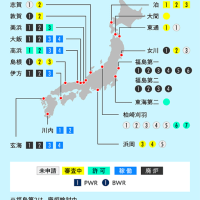2015-12-26 14:49:07 gizmode
Ecology and dish/drink
The cropper who closed a gap of the Neolithic era, hunting collection and an agriculture is clear.
2015.12.24 20:00
Comment
151217millet001.jpg
It was cereal of a small grain that human life and society were the trigger which turns big.
People's life found out that the crop which became the bridge who shifts to an agriculture from hunting collection was the millet grown at North China about 10,000 years ago at the Eurasian Continent in the Neolithic era.
Since it'll be now, a millet is the crop you rarely make edible. If anything aren't there a lot of people who hold an image as food of a bird? But it was a very convenient crop for a nomad in those days and hunting collecting people according to an archaeology magazine "Archaeology Magazine".
Because because a millet can be harvested in about 45 days to the America where it even takes nearly 100 days for profit after it's planted, in addition to needing much water. Moreover no water is needed so much, so you can do the farming even while moving periodically.
It was being thought that there were securement of water and formation of a community in the premise for the agrarian society which can supply food in stable way up to now. But agriculture in an early stage and a view to society are changing with this discovery.
Martin Jones professor of Cambridge University is making a comment as follows.
It's lined that person's village has been also formed out of agriculture in an early stage into the fact that a grown crop was a millet in a mountain range as well as plains near water. When following a transmission process of the millet transmitted to India and Europe from China, the reality of the agricultural history in the early stage made mystery up to now should become clear.
He's thinking a millet isn't only the clue to know the past.
We'd have to understand a millet more deeply. Because there is also a possibility that that will be the start which settles the food problem that the mankind is faced with it now.
source: Stolyevych Yuliya / shutterstock
(Mirei Takahashi)
2015-12-26 14:49:07
エコロジー , 食べ物/飲み物
新石器時代、狩猟採集と農耕のギャップを埋めた作物が明らかに
2015.12.24 20:00
コメント

151217millet001.jpg
人類の生活や社会が大きく変わるキッカケになったのは、小さな粒の穀物でした。
新石器時代のユーラシア大陸で、人々の生活が狩猟採集から農耕に移行する架け橋となった作物が、約1万年前の中国北部で栽培されていたキビだったということが分かりました。
キビは、今となっては食用にされることが少ない作物です。どちらかといえば、鳥のエサというイメージを持っている人が多いんじゃないでしょうか。でも、考古学雑誌「Archaeology Magazine」によると、当時の遊牧民や狩猟採集民族にとっては、とても便利な作物だったんです。
というのも、多くの水を必要とする上に植えてから収穫まで100日近くかかる米に対して、キビなら約45日で収穫ができるからです。しかも、あまり水を必要としないので、定期的に移動をしながらでも、農業ができます。
これまでは安定的に食料を供給できる農耕社会は、水の確保とコミュニティの形成が前提にあると考えられてきました。ですが、今回の発見によって初期の農業と社会に対する見解が変わってきます。
ケンブリッジ大学のMartin Jones教授は次のようにコメントしています。
初期の農業で栽培されていた作物がキビだったという事実は、人の集落が水に近い平野だけでなく、山岳地帯にも形成されてきたことを裏付けます。中国からインドや欧州に伝わったキビの伝搬経路を辿っていけば、これまで謎とされてきた初期の農業史の実態が明らかになっていくはずです。
さらに、同氏はキビが過去を知る手がかりだけではないと考えています。
私たちはキビのことを、もっと深く理解する必要があるでしょう。それが、今人類が直面している食料問題を解決する糸口になる可能性もありますから。
source: Stolyevych Yuliya / shutterstock
(高橋ミレイ)
Ecology and dish/drink
The cropper who closed a gap of the Neolithic era, hunting collection and an agriculture is clear.
2015.12.24 20:00
Comment
151217millet001.jpg
It was cereal of a small grain that human life and society were the trigger which turns big.
People's life found out that the crop which became the bridge who shifts to an agriculture from hunting collection was the millet grown at North China about 10,000 years ago at the Eurasian Continent in the Neolithic era.
Since it'll be now, a millet is the crop you rarely make edible. If anything aren't there a lot of people who hold an image as food of a bird? But it was a very convenient crop for a nomad in those days and hunting collecting people according to an archaeology magazine "Archaeology Magazine".
Because because a millet can be harvested in about 45 days to the America where it even takes nearly 100 days for profit after it's planted, in addition to needing much water. Moreover no water is needed so much, so you can do the farming even while moving periodically.
It was being thought that there were securement of water and formation of a community in the premise for the agrarian society which can supply food in stable way up to now. But agriculture in an early stage and a view to society are changing with this discovery.
Martin Jones professor of Cambridge University is making a comment as follows.
It's lined that person's village has been also formed out of agriculture in an early stage into the fact that a grown crop was a millet in a mountain range as well as plains near water. When following a transmission process of the millet transmitted to India and Europe from China, the reality of the agricultural history in the early stage made mystery up to now should become clear.
He's thinking a millet isn't only the clue to know the past.
We'd have to understand a millet more deeply. Because there is also a possibility that that will be the start which settles the food problem that the mankind is faced with it now.
source: Stolyevych Yuliya / shutterstock
(Mirei Takahashi)
2015-12-26 14:49:07
エコロジー , 食べ物/飲み物
新石器時代、狩猟採集と農耕のギャップを埋めた作物が明らかに
2015.12.24 20:00
コメント

151217millet001.jpg
人類の生活や社会が大きく変わるキッカケになったのは、小さな粒の穀物でした。
新石器時代のユーラシア大陸で、人々の生活が狩猟採集から農耕に移行する架け橋となった作物が、約1万年前の中国北部で栽培されていたキビだったということが分かりました。
キビは、今となっては食用にされることが少ない作物です。どちらかといえば、鳥のエサというイメージを持っている人が多いんじゃないでしょうか。でも、考古学雑誌「Archaeology Magazine」によると、当時の遊牧民や狩猟採集民族にとっては、とても便利な作物だったんです。
というのも、多くの水を必要とする上に植えてから収穫まで100日近くかかる米に対して、キビなら約45日で収穫ができるからです。しかも、あまり水を必要としないので、定期的に移動をしながらでも、農業ができます。
これまでは安定的に食料を供給できる農耕社会は、水の確保とコミュニティの形成が前提にあると考えられてきました。ですが、今回の発見によって初期の農業と社会に対する見解が変わってきます。
ケンブリッジ大学のMartin Jones教授は次のようにコメントしています。
初期の農業で栽培されていた作物がキビだったという事実は、人の集落が水に近い平野だけでなく、山岳地帯にも形成されてきたことを裏付けます。中国からインドや欧州に伝わったキビの伝搬経路を辿っていけば、これまで謎とされてきた初期の農業史の実態が明らかになっていくはずです。
さらに、同氏はキビが過去を知る手がかりだけではないと考えています。
私たちはキビのことを、もっと深く理解する必要があるでしょう。それが、今人類が直面している食料問題を解決する糸口になる可能性もありますから。
source: Stolyevych Yuliya / shutterstock
(高橋ミレイ)




















※コメント投稿者のブログIDはブログ作成者のみに通知されます